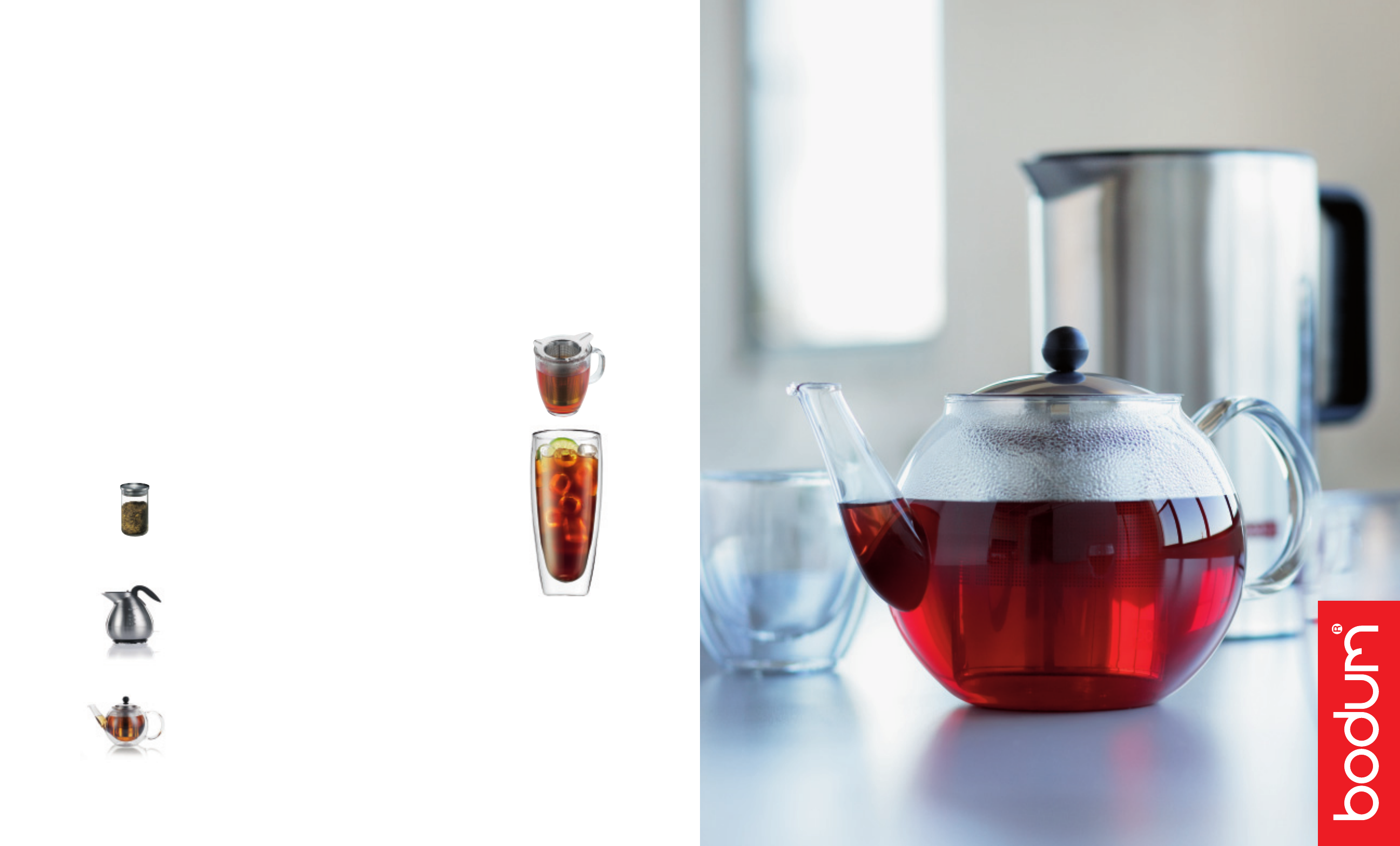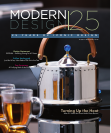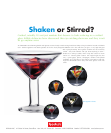
www.bodumusa.com
Design: BODUM Design Group
Shin Cha Tea Press 1803-16
1.0 l/34 oz/8 cup
1.800.23.BODUM
Bag tea bags
for good.
BODUM felt flattered when the British Tea Council asked them to develop a new
way of brewing tea. They decided to forget all they thought they knew about tea
and start fresh.
First they set out to learn all there is to know about tea
– from its history in different cultures and the various
ways of preparing tea to today’s habits in tea consump-
tion and preparation. Soon their goal became clear: they
wanted nothing less than to develop a new way of tea
brewing that would, on the one hand, respect the deli-
cate nature of tea and bring its richest flavors to full
bloom, and on the other, be even easier to use than tea
bags – the fast-food version of tea that no real tea lover
would be caught dead with. It was a lofty goal and the
success of the tea press certainly shows that they
reached it. BODUM did for tea what they
had already done for coffee: they devel-
oped a surprisingly simple brewing sys-
tem that would give any tea the optimal
time and space to release its rich flavor
bouquet and the plunger to interrupt that
process at the preferred time with one lit-
tle push. The most important lesson they
learned was that tea needs space to
develop – hence the spacious strainers in
all the BODUM tea presses. Tea leaves
can swirl and float freely and go about
their business of releasing their stimulat-
ing or soothing qualities depending on
the preferred choice of tea. After four or
five minutes the push of the plunger
encapsulates the pressed tea leaves at the
dead end of the strainer and the brewing
process is stopped. Just like that – with-
out making a drippy mess on the count-
er or the new tablecloth. No wonder it
was a piece of cake to convert tea bag
users to the tea press. More flavor for less
work – that was a concept even people
in today’s fast lane could sign up for.
The Art of Tea Making
Start with very clean utensils. The widely
shared belief that brown coating in a tea
pot makes better tasting tea is a myth.
Put fresh, cold water to boil.
Cold water contains more oxygen
which gives the tea its full flavor.
Do not overfill the strainer.
Tea leaves need room to swirl freely.
Add 1 tsp for the pot and 1 additional
teaspoon per cup of tea.
Do not overboil the water,
the oxygen will be boiled off.
Pour the water over the tea
as soon as the water starts to boil.
Let the tea draw for about 5 minutes
(varies for different teas and tastes).
Little Tea History
According to Chinese mythology the first cup of tea was made in 2737 BC.
The Chinese Emperor, Shen Nung, scholar and herbalist, was sitting beneath a tree while
his servant boiled drinking water. A leaf from the tree dropped into the water and Shen
Nung decided to try the brew. The tree was a wild tea tree.
From the beginning tea has been known as a healthy and refreshing drink, and it was
spread throughout China and Japan by the movement of Buddhist priests.
In Japan the tea ceremony is considered to be the purifying bath of the six senses.
In 1644 tea is recorded in England for the first time. Sailors from the Far East brought
back packets of tea as presents which led to its introduction into London’s coffee houses.
In North America drinking coffee instead of tea became the patriotic thing to do after
England levied a tax on tea shipped to its colonies. On December 16, 1773, fifty men dis-
guised themselves as Indians and boarded ships owned by the British East India compa-
ny. They smashed open 342 crates of tea and threw them into the Boston Harbor. This
became known as the Boston Tea Party and ultimately led to the American Revolution.
Bora Bora
Tea Press Double Wall
0.5 l/17 oz
Yohki
Storage Jar Stainless Steel Lid
From 0.25 l/8 oz to 2.5 l/85 oz
Pavina
Glass Large Double Wall
0.46 l/15 oz
Yo Yo
Tea Cup, Infuser Stainless Steel
0.31 l/10.5 oz
Curl
Water Kettle Electric Stainless Steel
1.4 l/47 oz









